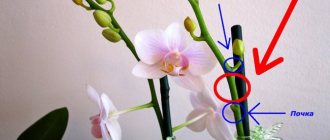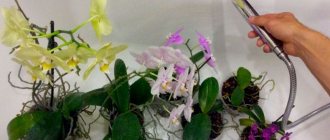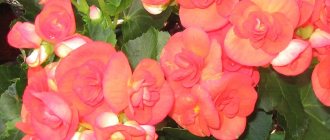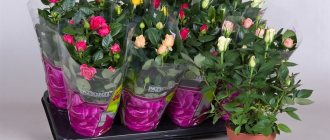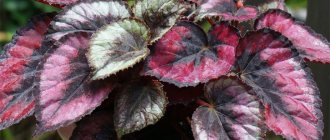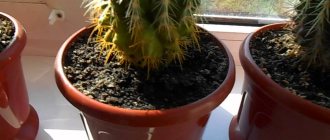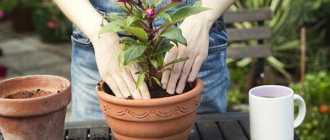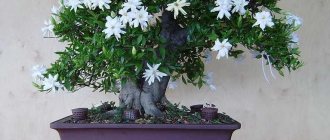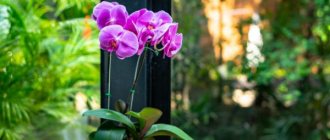When kept in a room, gardenia jasmine can reach a height of 60-80 cm. In the wild, it blooms twice a year, but it will be very difficult for amateur gardeners to achieve a similar result at home. The shoots are smooth and become woody with age. By pinching the tops, you can give your pet any intricate shape.
Home care
Gardenia jasmine not only blooms for a long time, but also exudes a pleasant aroma. You will have to spend some time and effort caring for this snow-white wax flower, as it is very capricious. But the result is worth it.
Location and lighting
Carefully choose the place where the regal gardenia will stand. Eastern or western window sills are best suited for this. Just in front of the windows, dense trees should not grow to block access to light.
If you have to place the flowerpot on a south window, then in the summer at noon you need to lower the blinds or shade the plant with translucent material. Although the plant loves bright light, direct sunlight can leave burns on the leaves and cause them to fall off. In winter, additional illumination with phytolamps is required up to 12 hours of daylight.
During budding, do not move the pot under any circumstances, otherwise the buds may fall off. The angle of light from the lamp should also remain constant.
Do not consider the bedroom as the ward's place of residence. Its strong aroma during flowering can cause headaches in some cases. It is better to keep it in the living room, inhaling a useful and unusual smell.
Temperature
The eastern guest is quite picky about temperature conditions. In spring and autumn, in the room where the flower is kept, it should be +22-24°C during the day, and a little lower at night: +18-20°C. In winter, the intervals on the thermometer should be +17-20°C during the day and at least +16°C at night. Temperatures below +12 degrees are deadly for the bush.
During the budding period, the air should not warm up above +20 degrees, otherwise the plant will direct its energy not to flowering, but to throwing out new branches.
If the pot is in a draft or the room is too dry, the hydrangea will drop its buds.
Watering
In winter, Augusta does not need to be particularly flooded. 2-3 waterings per month will be enough. Starting in mid-March, when buds are actively developing, change your approach to soil moisture. As soon as the top layer begins to dry out, immediately add life-giving moisture.
Pre-settle the water and warm it up a little. You can add a little citric acid or peat to a container of water. If you delay watering, you will notice that the leaves will begin to turn yellow.
Air humidity
Regularly spray the leaves with a spray bottle and the air around the flower. In addition, you can move the flowerpot into a container with wet pebbles. Just make sure that the roots do not come into contact with the water level, otherwise they will rot. Wipe the leaves with a wet rag from time to time.
You can also give your ward a warm shower without touching the buds with a stream of water and covering the ground with polyethylene so as not to wash the substrate. Do this daily. But as soon as the buds begin to bloom, stop the procedure. Otherwise, brown spots will appear on the leaves and flowers.
The soil
If you decide to start a jasmine gardenia, purchase for it a fertile, loose and acidic soil mixture for acidophilic plants. To prepare the soil for planting yourself, mix:
- 25% coniferous land;
- 25% turf land;
- 25% peat;
- 25% sand or perlite.
Don't forget to bake the soil in the oven. Over time, the acidity of the soil will decrease, so raise it to the desired level 2-3 times a month using citric acid (5 drops) and copper sulfate (0.5 g) per 1 liter of water.
Feeding and fertilizers
After transplantation, there is no need to fertilize the soil for two months. In the future, regularly use liquid fertilizer for flowering azaleas. Fertilize the roots once a month, and 2 weeks later, dissolve the fertilizer in water for spraying. This is enough for a whole month.
Once spring and summer are over, stop fertilizing until next spring. This does not apply to young plants. They need feeding throughout the year.
So that your green friend does not need iron, dig two or three rusty nails inside the pot. This is especially true if the leaves suddenly begin to turn yellow.
Transfer
After purchasing a flower in a store, it should be transplanted into a new pot after a couple of weeks. Choose a container 2 cm wider in diameter than the store-bought one. Transfer the bush to a new place without shaking the soil from the roots.
Be sure to cover the bottom of the flowerpot with a layer of drainage, then a layer of river sand with a coarse fraction mixed with charcoal, and then a layer of new soil. After placing the gardenia in a pot, fill the empty spaces with soil mixture and water with warm, settled water.
If you have purchased a flowering bush, do not replant until it has finished blooming, otherwise the representative of the Mirenaceae family will drop its buds and you will not be able to enjoy its beauty.
Mature plants do not like transplanting. So do this as needed approximately once every three to four years, either in early spring before the buds appear, or in the summer after flowering. Having taken the bush out of the old pot, cut off a quarter of the roots, and treat the cut areas with rootstock. After transplanting, place the pot in a bright, warm place.
Trimming
To ensure that hydrangea produces as many side shoots and flower buds as possible, you need to pinch off the young tops. This must be done all the time while the ward is developing, that is, in spring and summer. At the same time, get rid of diseased and weak leaves and dried flowers. If you leave the seeds to ripen, it will take a lot of energy from the flower.
After flowering, do a “general” cleaning, getting rid of excess shoots and forming a beautiful crown. But even shorten all remaining stems by a third of their height. This procedure will allow Cape jasmine to bloom magnificently next year. You don’t have to throw away healthy cuttings, but use them to produce new flowers.
What is gardenia
At home, only such a species as Jasmine Gardenia (Gardenia jasminoides) is grown. In indoor conditions, a gardenia bush usually grows to 45–50 centimeters. It has leaves of extraordinary beauty, which are shiny and dark green.
Gardenia flowering continues for quite a long time, namely, from July until almost the last days of October. If you take good care of this flower, then buds will be visible on its shoots, and then flowers in a very large number. Its double flowers are quite large and white in color. They are very similar to roses and have a simply excellent aroma.
This plant can decorate absolutely any room, successfully fitting into its interior and adding a certain sophistication.
Gardenia is very demanding and capricious. There should be no drafts in the room where it is located, and only soft water is suitable for watering. This flower is also heat- and light-loving, and feels great when the air humidity in the room is quite high. If you care for your gardenia correctly, you will definitely be rewarded for your efforts with an abundance of lovely flowers.
Often this wonderful flower is given as a gift, and its new owner is unlikely to know how to care for it. And there are often cases when gardenia dies due to a change in habitat and changes in temperature. Despite the fact that it is quite difficult to “make friends” with this beauty, it is undoubtedly worth it.
Reproduction
You can increase the number of individuals in your home collection using cuttings, seeds, or dividing the bush into parts. The most difficult thing is to grow a new gardenia from seeds.
Cuttings
It is advisable for beginning flower growers to use this method. As soon as the bush fades, cut the apical cuttings. They must be at least 10 cm in length. It is desirable that each one has a heel - a small woody tip. If there are more than 3-4 leaves on the cutting, you need to get rid of them. Lubricate the cut with activated carbon and treat it with a root growth agent.
You can place the propagation material in cups of water. But it is better to immediately plant it in a moistened soil mixture. Take a plastic container with a lid and slam it shut, planting the cuttings.
Rooting should occur at +25C. Remove the cover from time to time to ventilate and moisten the planting. In about a month, roots will appear. Then the cuttings should be planted in separate flowerpots.
When the shoots reach 15 cm, the tops should be pinched, otherwise side shoots will not be able to develop.
Seeds
The difficulty with this method is that the seed material must be fresh - 2-3 days after collection. But even in this case, do not count on a germination rate of more than 50%. Before planting, treat the seed material with aloe juice, leaving it in it for 4-5 hours. After this, sow in a plastic container with a lid or in any other container, stretching plastic film over the top.
Pre-acidify the substrate. Bury the seeds 5-6 mm, sprinkle with warm water with lemon juice. If necessary, remove the cover or film, ventilate the seedlings and moisten the soil with a spray bottle.
A month later, when shoots appear, move the box to the windowsill, providing bright but diffused light. When the sprouts produce leaves, plant them in separate pots with a diameter of approximately 7.5-10 cm. Pin the sprout that has stretched up to 15 cm.
Seedlings from seeds usually bloom in the second year.
Dividing the bush
During transplantation, carefully examine the roots. Having noticed independent shoots, carefully separate them from each other and plant them in separate flowerpots, placing them strictly in the center. Make sure that the roots do not touch the layer of expanded clay laid on the bottom for drainage.
Cover the sprouts with plastic wrap to create a greenhouse effect. Grow at a temperature of 24 degrees, placing it close to the window, but not on the windowsill itself, protect it from drafts. After a month, you can safely move it to the glass.
Care errors
- If the leaves turn pale, move the flowerpot to a better lit place.
- If blackening occurs, limit exposure to direct sunlight.
- Yellow spots on the leaves require watering with acidified water.
- The falling of buds and leaves indicates improper care of the gardenia.
- Specks on the inflorescences appear due to spraying. This procedure should be stopped before flowering has completely faded.
Diseases and pests
The appearance of scale insects on a flower is marked by brown spots on the inside of the leaves.
For treatment, use soap or alcohol rubbing. Handle the plant carefully so as not to damage the fragile leaves . The most effective is to spray the bush with Aktara solution four times a week. Also the most common pests are:
- tris;
- aphid;
- spider mite
- If the leaves become sticky, rinse them with a gentle stream of water until the aphids disappear.
- If water treatments do not help, you will have to treat the bush with a soap solution.
- In case of tick-borne infestation, use insecticidal soap or the special drug “Decis”.
- Sometimes the plant slows down, gray spots appear on it, the leaves turn pale and fall off. In this case, use products such as Fitoverm and Actellik. If the treatment does not bring results, then the flower will most likely die.
Video about diseases and pests of gardenia jasmine:
Folk signs
Gardenia jasmine with its appearance will bring love, tenderness and good mood to the house. She is able to calm the household and set them in a peaceful mood.
If you need to win someone over, grind the leaf into powder and rub it into the skin before the meeting. If you are expecting an important guest, pour a little powder on the threshold so that he will cross.
It is advisable that the newlyweds have gardenias with them. The bride can add a white flower to her bouquet, and the groom can decorate his boutonniere. Decorations like these will bring love to a couple’s home for many years to come.
Interesting Facts
Blues singer Billie Holiday called gardenia her favorite. The dark-skinned diva loved how the snow-white petals contrasted with her hair.
Madonna herself has always shown an interest in the intoxicating aroma. Her favorite perfumes contain a note of gardenia.
Any flower has its own symbolic meaning. Interpretations may vary among different peoples and cultures. For the Japanese, gardenia means secret passion. And the Chinese see in her femininity, grace, aristocratic fragility.
In natural conditions, gardenia produces a strong aroma for a reason. Thus, the beautiful representative of the flora attracts insects. Butterflies and bees contribute to abundant flowering. Even bats come to pollinate flowers.
Various parts of the plant are used in folk medicine. It is believed that an infusion of leaves, bark, and flowers helps with headaches and insomnia, and has calming and antipyretic properties. Aromatherapists recommend the scent of gardenia to relieve emotional tension, stress and shock.
Medicinal properties
Cape jasmine is not only beautiful, but also very beneficial for health. You can prepare a decoction from the roots and fruits that will help heal tonsillitis, stomatitis, jaundice, and sore throat. You can apply the paste from the fresh plant to a wound or bruise.
You can use it externally, in the form of rinses or lotions, but under no circumstances swallow it, as there is a chance of poisoning.
When working with gardenia, be sure to wear gloves.
If you have free time for care, be sure to plant jasmine gardenias at home. Your home will be decorated with white flowers and will smell like French perfume.
Indoor varieties
The Gardenia genus includes 134 species, but mainly gardenia jasmine is bred for decorating living spaces.
Gardenia jasminoides or Cape jasmine (Gardenia jasminoides)
A tree-like shrub with smooth shoots grows up to 1.8 m in height. Gardenia is easily recognized by its large snow-white flowers (up to 7 cm in diameter). Flowers are located on woody shoots in inflorescences or single terry cups. Jasmine gardenia, which is cultivated for decorative purposes, blooms longer than the wild plant.
A characteristic difficulty in growing a tropical flower is its capriciousness to microclimate conditions. Gardenia does not tolerate fluctuations in temperature, lighting and air humidity; it reacts painfully to them by fading, dropping flowers and blackening of leaves.
In winter, when daylight hours are significantly reduced, the shrubs are provided with additional lighting. In the summer, gardenia, on the contrary, is darkened. The natural habitat of the species is the forests of China and Japan.
Gardenia profusely (Gardenia Florida)
The variety is attractive with fragrant flowers, resembling camellia in appearance. In beauty and richness of aroma, the white gardenia bush can compete with the rose bush - it is often used for decorating rooms.
Gardenia radicans
A dwarf variety of gardenia, very popular among gardeners. A small bush with a rounded crown reaches a maximum of 60 cm in height. It can be used for growing bonsai. Fragrant large flowers please the eye for a long time, subject to proper watering and feeding.
